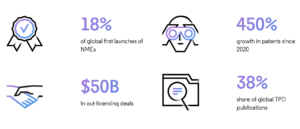
CRISPR & Co are GMOs, says EU court
The EU Court of Justice has ruled that plants created using novel genome editing methods will be classed as genetically modified organisms and therefore have to follow the strict EU guidelines for GMOs.
Yes, organisms obtained by mutagenesis are GMOs, the Court of Justice said in its ruling today. They therefore are subject to the obligations laid down by the GMO directive. In a statement, the court takes the view, first of all, that organisms obtained by mutagenesis are GMOs within the meaning of the GMO Directive.
The industry’s answer came swiftly: The court ruling could lock out the benefits of genome editing from Europe, warned EuropaBio, the European association for Bioindustries. In addition to providing consumer and environmental benefits, such as enhanced nutrition, improved health or a more circular economy, innovations made possible by genome editing hold enormous promise to keep Europe at the forefront of socio-economic development, continuing to generate jobs and growth in the EU, said EuropaBio’s Secretary General John Brennan. Unfortunately, this court ruling […] does not provide the necessary regulatory clarity needed by EU researchers, academics and innovators.
Environmentalists, on the other hand, applauded the decision. "Today’s ruling is a victory for food safety and the environment. Just because the industry has come up with new ways to modify organisms does not mean that these techniques should be exempt from existing EU standards on GMOs, commented Bart Staes MEP, Greens/EFA group in the European Parliament. Recent scientific studies show that these new techniques might not be as accurate as the industry claims them to be, that’s why it’s essential that they come under the same labelling requirements and impact assessments as existing GMOs. These new patented organisms may have unintended effects, as well the potential to increase our dependence on the agri-chemical industry, and therefore must be stringently monitored by the European Food Safety Authority for any risks to human, animal and environmental health."


 White House
White House Clarivate
Clarivate H. Zell - wikipedia.org
H. Zell - wikipedia.org